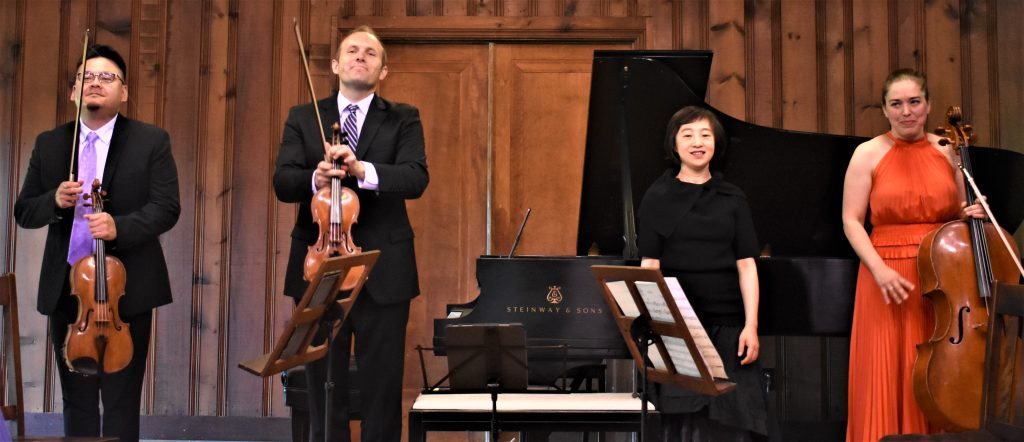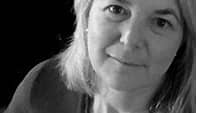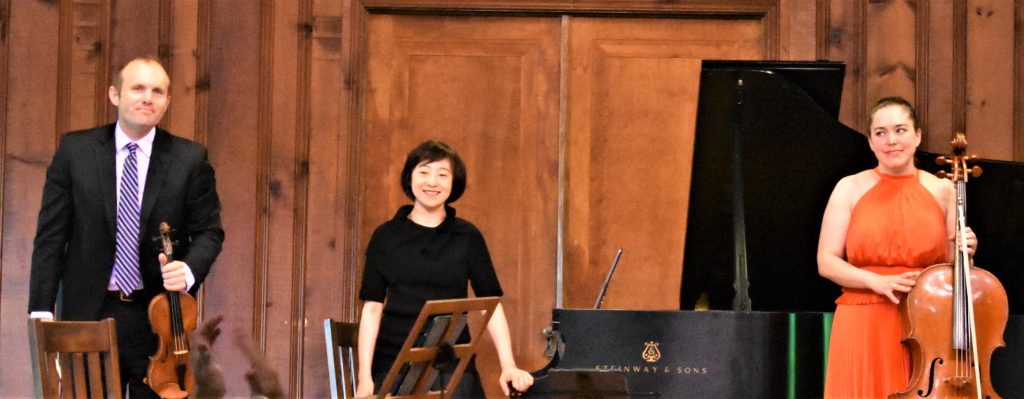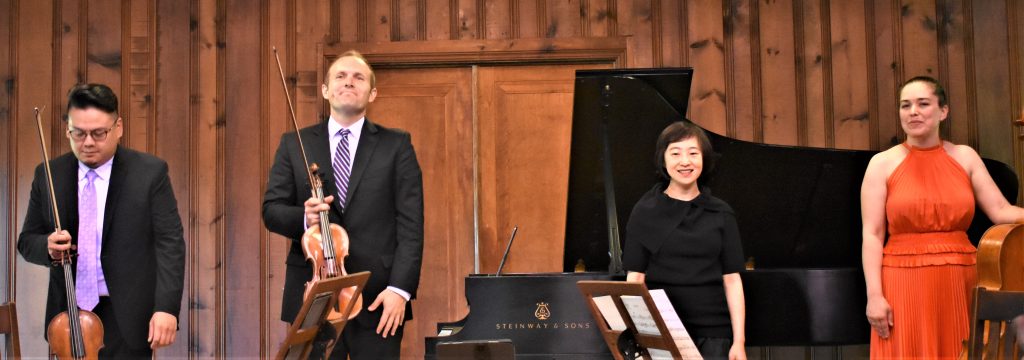
Pianist Natalie Zhu, recent recipient of an Avery Fisher Career Grant and other numerous awards, displayed her dexterous fingers in four works. She has played in a host of quartets and in the last twenty years has been a recording partner with Hilary Hahn. At the age of 26, Beethoven had a deep affection for A-flat and B-flat. Beethoven, a noted pianistic performer at the time, admired Mozart’s Quintet for Piano and Winds in E-flat Major; Beethoven modeled his 1796 quintet on Mozart’s. When it was published in 1810, he added an arrangement for a piano quartet, now known as Piano Quartet in E-flat Major, Op. 16, a work that demands a virtuoso pianist. Here was the Eleora Piano Quartet to do this early work justice.
With an arresting opening, followed by dotted rhythm, the work certainly arouses one’s interest, then the cello challenges the piano. Rachael Henderson Freivogel, current cellist for the Jasper Quartet, was another eloquent force to be heard. The first movement, structured like a Hayden sonata, appears to suggest several themes for about three minutes, then runs with an agreed upon theme. The second movement delivers a happier Mozartian ambiance augmented by ornamentation from the violin of Rebecca’s husband, J Freivogel. On a 1756 viola Che-Hung Chen is definitely on board as the piano dialogues with instruments on where they are going. They are all united in agreement for the third movement as they rise to an effect larger than mere chamber music—the quartet intimates precocious symphonic ambition. Beethoven traces a line from the past and predicts his own future projections. The tight blend of instruments with amazing piano arpeggios announcing a fierce statement of promising accomplishment.

Tremble for Piano Trio (2013) by Tina Davidson (b.1952) was written in memory of the composer’s father. Tina Davidson is one of this country’s leading composers. This short, intense work explores motifs of tension, ambivalence, and love. The piano appears to be running away while the violin (her mother) cautions her and the cello (her father), played with imposing finesse by Rachel Henderson, sounds at times as if it is warning her. Davidson was born in Sweden, yet educated in Oneonta, New York. This highly original piece with dense harmonics demands to be heard more than once; it offered a high-octane selfie-snapshot of the known-unknown ambiance of contemporary life.

At the age of thirteen Fanny Hensel (1805-47) performed the twenty-four preludes of Bach’s Well-Tempered Clavier for her father’s birthday—from memory. Her father forbade her to perform publicly. In his letters Felix Mendelssohn admits that she was a better piano player than he. When King Albert invited Felix to England (the first of five such invitations), Felix asked his young bride, Queen Victoria, which of the compositions he played did she like best, Felix admitted that the composition was written by his wife Fanny. Victoria did not believe him. Fanny left over 500 compositions after her death. They began to be published in the 1960’s, yet most are still not published. One of my favorite compositions of hers is Das Jahr (The Year), an epic which features a composition for the character and qualities for each month of the year. Fanny’s Piano Trio in D minor, OP. 11 (1846, written as a birthday present for her sister) and one of her most famous works was next. The many stormy passages in this delightful work’s four movements likely refer to incidents in her sister’s relationship with her while presented with jocular familiarity. The piano occupies the central role portraying her sister’s character with cello (representing her father and violin representing Fanny). This was played with such intensity, I was awed.
Piano Quartet in B-flat Major, Op. 41(1875) by Camille Saint-Saëns remains a keyboard mountain composed by the most legendary of all keyboardists. Surprisingly, this work was not published until 1992, yet it is now considered a major work in the core of piano repertoire. Complicated and breathtaking, it employs some circular motifs (which German critics declared retro-verboten), yet both Camille and Caesar Franck continued to employ as an organizing principle. (Circular motifs in folk music imply a myth of eternal return while they are boringly repetitious.) There is nothing boring about Camille’s composition nor the unified acrobatics of this performance where it was a pleasure to hear once more Che-Hung Chen’s viola.

This concert offered an unusual program of impressive works, which indicates that players and management continue to work successfully with past and present.